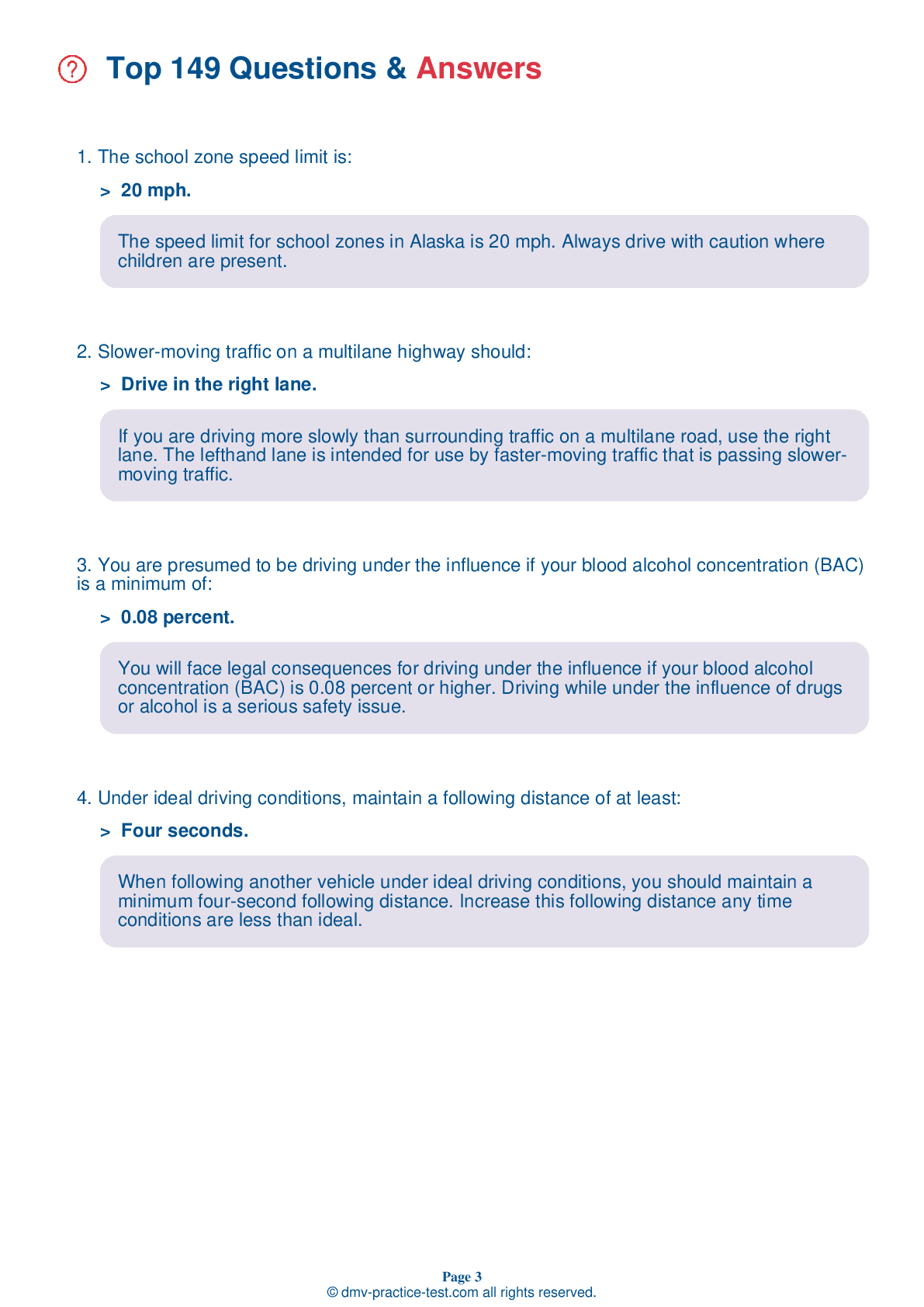FREE Alaska DMV Practice Test #12 Page 3 of 3
This Alaska DMV practise tests has just been updated for January 2025. It contains questions based on the most essential traffic signs and limitations from the Alaska Driver Handbook for 2025. Use actual questions that are very close (often identical!) to the DMV driving permit test and driver's licence exam to prepare for the DMV driving permit test and driver's licence exam.
To help you recall the topics, each practise test question includes a suggestion and explanation. The written component of the official DMV test will include questions about road rules, traffic signs, and driving statutes, as well as information from the Driver Handbook.
To get the required passing mark, you must correctly answer 16 out of 20 questions. Take our DMV practise exam to help you prepare for your Alaska instruction permit or driver's licence.
The DMV exam is available in multiple languages.
Using any form of testing aid will result in an automatic failure, and the DMV may take further action against your driver's licence, so don't do it.
14 . From the center lane, which maneuver(s) can you perform?

This sign indicates where a lane is reserved for the exclusive use of left-turning vehicles from either direction. Such a lane may not be used for passing or for through-traffic.
15 . To ensure that your physical condition does not cause you to drive in an unsafe manner, you should:
Your physical condition has an important bearing on your ability to drive safely. Drivers should be aware of their physical limitations and only drive if it is safe to do so.
16 . You must stop at a railroad crossing when:
You must stop at a railroad crossing when directed to do so by a flagger or stop sign. Stop when flashing red signals and gates are present and operating.
17 . This road sign means:




